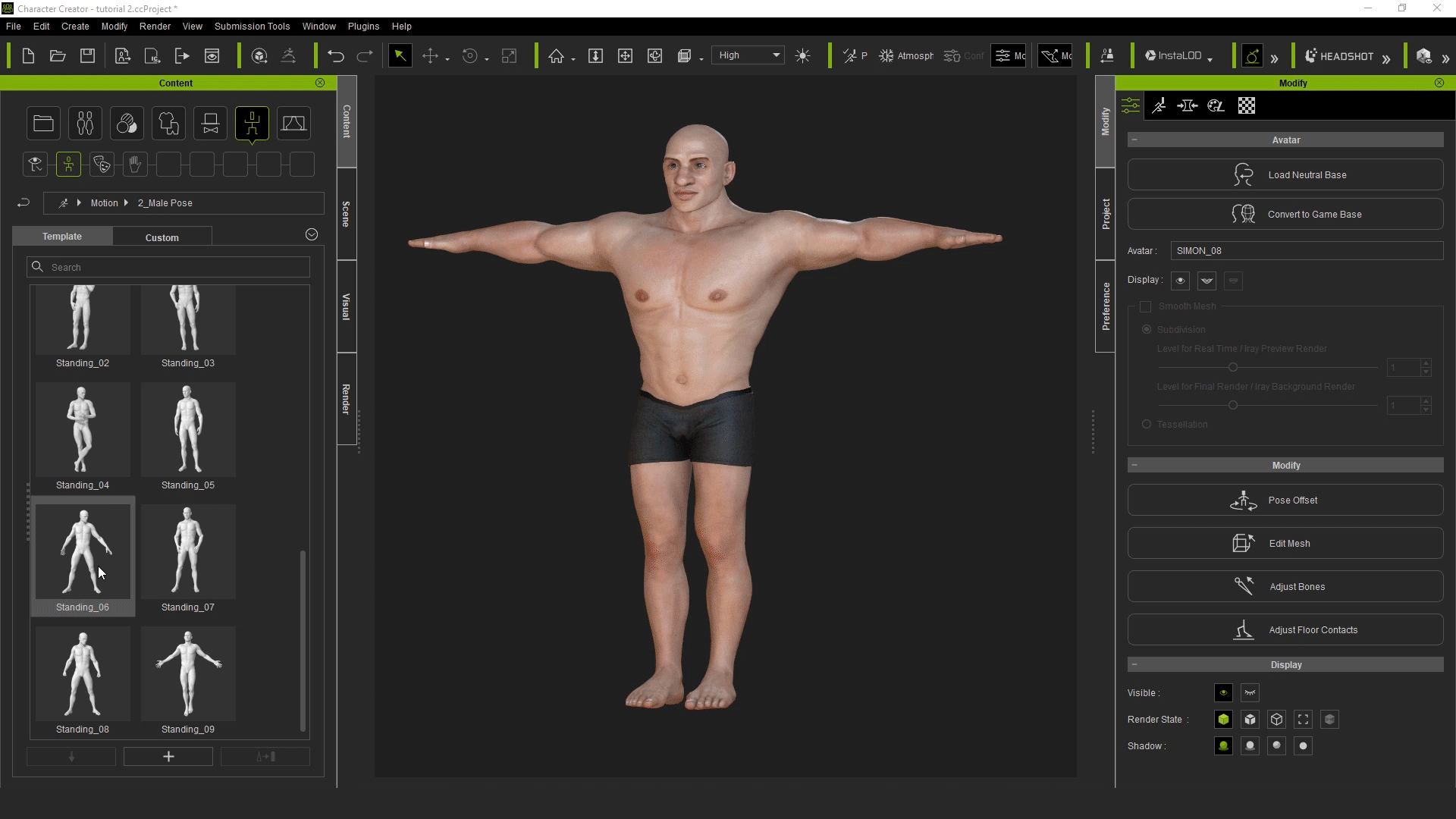Tutorial 4: Custom SkinGen Asset Creation with Texturing.xyz
Hello, welcome to this fourth section of this Skingen masterclass with Character Creator. In this section, we are going to perfect the last details of the skin.
We can further customize the textures of our character, including the XYZ asset scene. In this project, I will use a displacement material for Face, Hand, Elbow and a Normal Micro detail map.
For the Micro detail map, we simply import it from the Material editor into the Micro Skin box.
Before importing Displacement maps, you need to edit them in Photoshop; In a 4k resolution document, with the reference UB and the base color, I place the parts of the map following the pattern of the face so that they remain in their corresponding places.
At the end we apply a level effect and finally a Normal map filter - remembering that this process also applies to the Arm maps, using the same procedure.
To integrate the new facial texture, we activate the Skin Appearance editor and include a Part Normal layer in the scene. Then we include a Face mask, which we can take from the CC3 HeadShot plugin, or just paint it from Photoshop. Below is the newly created Normal map. I repeat the same process for the arm texture.
As an additional point, we can save the new textures by right-clicking on the layer, and going down the Effect category. We select Normal effects, Face Levels and, finally we add it to the library in its corresponding place.
When working on future projects, we can reuse these materials on new characters and the results will be very interesting.
Now, for the texture of the relief tattoo, what we will do is include a layer of Decal; then we insert the mask we made in Substance Painter; taking into account that it shares the UV of the head, arm and body. The other maps will be the traditional ones that were previously exported; base color, Normal map and Roughness.
We do the same with the other UVs.
To save these textures in our Content library, the process is similar to the previous one. Right-click layer / Effect category / Skin details / Other decal; It is important to repeat the same process with the two remaining UVs (body and arm). In the end we add and change the name.
We can do the same exercise of testing the new material layer on a new model.
To finish, we insert on the face a few effects layers, some of which include Color Noise to contrast with skin tones; Lip Wrinkle to enhance the appearance of the lips; Oily to increase facial shine and a couple of scars on the upper part of the brow.
Next, we take the opportunity to include some scars on the abdomen and arms as additional elements.
With this step, we have finished this tutorial; As can be seen, these tools are compatible with different programs, which allow us to enrich the quality of our skin assets for any Character Creator projects. All we need is a little common sense and some observation.
Thanks for reading!
Tutorial 1: CC Skingen MasterClass: Creating a Stylized Demon with New CC3+ Base #1
Tutorial 2: CC Skingen MasterClass: Creating a Stylized Demon with New CC3+ Base #2
Tutorial 3: CC Skingen MasterClass: Creating a Stylized Demon with New CC3+ Base #3
ArtStation: Luis Duarte
Reallusion Content: https://cutt.ly/3u0hl6t
YouTube: https://cutt.ly/Tu0jeKf
FOLLOW US!!!!!















































































